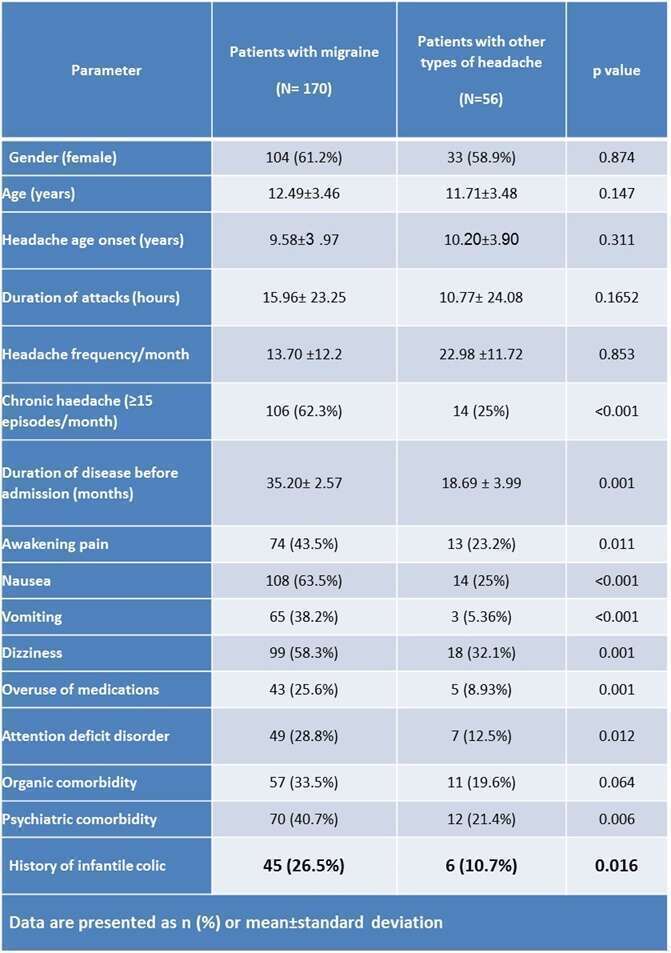
Comparison of the Prevalence of Infantile Colic between Pediatric Migraine and Other Types of Pediatric Headache
2The Department of Pediatrics B, Schneider Children’s Medical Center of Israel, ישראל
Introduction: The classification system of headaches of the International Headache Society included infantile colic under the heading “Episodic syndromes that may be associated with migraine”. some of the clinical characteristics of infantile colic, particularly its painful, episodic, but self-limited nature, suggest that it shares common pathways with migraine headache.
Aims: The aims of the study were to examine whether the reported association of infantile colic and migraine in children pertains also to other headache types.
Method and Subjects: A cross-sectional historical study was conducted of 226 patients aged 3-18 years who presented to a tertiary pediatric headache clinic in 2016-2017. Parents were asked a series of questions to determine if their child had had infantile colic as defined in the ICHD3-beta version. Findings were compared between children diagnosed with migraine or other headache types.
Results: There were 137 girls (60.6%) and 89 boys (39.4%) of the mean age of 12.3±3.47 years at presentation. Migraine headache was diagnosed in 170 patients (75.2%) and other types of headache (14 in total) in 56 (24.8%). Fifty-one patients had a history of infantile colic: 45 in the migraine group (26.5%) and 6 in the comparison group (10.7%); the difference in colic prevalence was statistically significant (p<0.0161; OR 3, 95% CI 1.17-9.11). There was no association of specific migraine parameters or symptoms with infantile colic.
Conclusion: There appears to be an association of infantile colic with pediatric migraine but not with other types of pediatric headache. Our results reinforce the theory that infantile colic may have shared a pathogenic pathway with migraines.

Powered by Eventact EMS